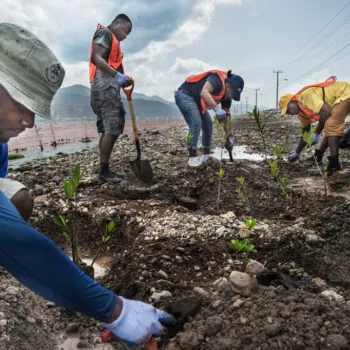The Government of Colombia has decided to establish a new fund, the “Colombia Sostenible”. The fund will support efforts to consolidate peace and a prosperous future in rural areas of the country, balancing the pressures of development with the protection of rich and diverse ecosystems. If well structured and implemented, this fund has the potential to maximise national public funds, raise international finance and involve the private sector to build clean, resilient and more prosperous communities. It will also be a building block for the implementation of the Sustainable Development Goals (SDGs) and the national contribution to climate change, or INDC.
The Governments is currently working to get this fund started. E3G has been accompanying this process, and in the quest for implementation we have seen firsthand some of the challenges in the way and efforts to address them. Learning from these and other experiences is essential as the world moves ahead with the implementation of the SDGs and the Paris Agreement. I’ll share two issues here that we found to be particularly important: indentifying how to address core national interests when implementing these agendas and, critically, exercising good planning practices.
SDGs and NDCs give the legitimacy to act, but the real economy is the engine for change
When looking to address sustainable development and climate change, we are actually looking to transform the real economy. We want to tap into cleaner more efficient and equitable ways of developing which can help our societies adapt and flourish in the 21st century. In other words, actions towards a climate friendly and sustainable development are actions towards addressing core national interests, rather than ad hoc good practices.
For this reason, effectively implementing climate and sustainability agendas means assessing these actions against the political economy landscape. This is the approach we have taken to provide support to Colombia Sostenible to help define the strategic investments that can kick start economic activity in the areas which will further these agendas as well as addressing core national interests.
Our analysis points out that, in the midst of the peace process and social challenges, the country’s economy is being put to the test. Structural changes are required to address Colombia’s underlining vulnerability to commodity price fluctuations, exchange rate variation, competition of international markets and the El Niño / La Niña phenomena. The solutions to many of these problems lie in a decisive approach to a low carbon resilient development path, which Colombia Sostenible could support. By inserting the initiative in this landscape we get a better sense of how it could bring with it transformational change.
For example the recent climate super charged El Niño is challenging traditional thinking behind hydro power vulnerability. Previously unspoken energy security in Colombia is rising up the national agenda. The Colombia Sostenible initiative could champion new renewable energy technologies and distributed smart grids in rural areas to improve energy security. This approach could also help build a new generation of high quality green jobs; which according to a recent report by IRENA, are on the rise – up 6% last year – whilst jobs in the oil and gas sector are declining.
Furthermore, Colombia Sostenible could champion development of green economic hubs supporting sustainable resources use, providing training for a skilled work force, generating improved standards of production and creating connection to new markets. This would help the country discover how to best situate itself in the global low carbon supply chain, facilitating the transition to a more diversified economy.
Good planning: key in the recipe to success
A well implemented Colombia Sostenible has the potential to help mitigate some core national concerns. However, the value of these public investments will depend largely on Colombia’s ability to incorporate its long term vision; as well as structuring a set of steps to achieve that purpose, maximize impacts and mitigate drawbacks.
A thoughtful planning process should help identify specific areas for investment where the fund can repeatedly add value in step with the long term vision, as well as to generate the tools to attract the right projects. This includes actively defining a portfolio management strategy to encourage the type of projects needed. For example, if the portfolio prioritised a percentage of the fund for certain type of desirable projects under specific areas for investments, such as highly innovative or jointly presented by two or more institutions, it would guide the development of a high impact portfolio; avoiding funding activities that fall far from supporting the fund’s purpose.
Good planning can also help tackle the lack of a high quality and financeable program pipeline. This is a difficult hurdle, not only in Colombia but in the international community, to fund climate friendly investments. This often results in more finance being directed to projects with lower environmental or social value and higher carbon outputs. Technical expertise in the specific areas targeted can be directed to help identify and develop a high quality pipeline.
The ability to highlight the solutions – rather than constraints – that climate and sustainable development commitments offer to core national concerns will be essential to help drive the reforms required for a zero carbon and sustainable world. This particular example in Colombia is a great window into how these efforts intertwine with broader national priorities; and how good planning practices can’t be underestimated in order to secure the long term outcomes conceived with scarce public finance, limited capacity in government, and widespread short-termism.


